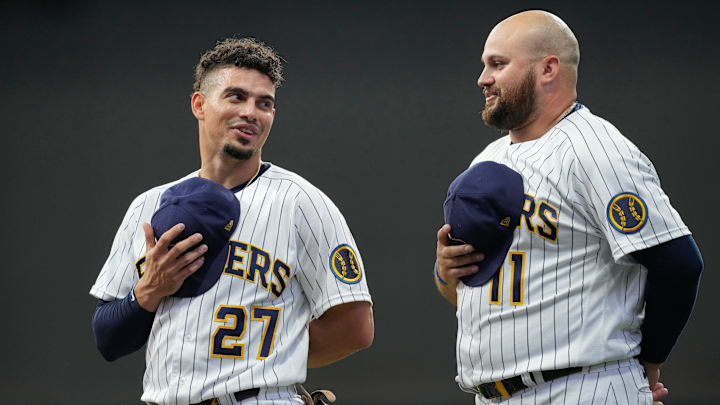
3. OF Tyrone Taylor
I am not advocating for Tyrone Taylor to be the primary right fielder for the Brewers in 2023. I have even suggested his role should decrease this upcoming season. But, he is projected to be the Brewers' right fielder to start the 2023 season. Who knows how long of a leash Taylor will have with exciting prospects knocking on the door to take over the reins in the outfield.
However, when looking at players who may see a benefit due to the shift being restricted, Taylor's numbers suggest the rule change could be what he needs.
The table below illustrates Tyrone Taylor's wOBA splits when the defense is shifted against him, and when it is not:
Data from Baseball Savant:
Season | PA | Shifts | Shift % | wOBA - No Shift | wOBA - Shift |
|---|---|---|---|---|---|
2021 | 269 | 105 | 39.0% | .372 | .275 |
2022 | 404 | 174 | 43.1% | .337 | .287 |
Since Taylor started getting more playing time for the Brewers, his wOBA splits have been noteworthy. In 2021, his wOBA when the defense wasn't shifted was about 100 points better than his wOBA when the defense was in a shift. In a 2022 season that had a larger sample size, Taylor's wOBA was still 50 points better when the defense did not have the shift applied.
To maintain sustained playing time, Taylor will have to improve in a big way at the plate. He will need to improve his plate discipline and boost his bat-to-ball numbers, and even then, there will be so much competition for the right field position it may not be enough.
With that being said, the new rule could help Taylor even if he were to be relegated to a bench bat. It is yet to be seen the significance this rule will have at the Major League level, and the impact it has on a batter's performance will be fascinating to track all season long.
